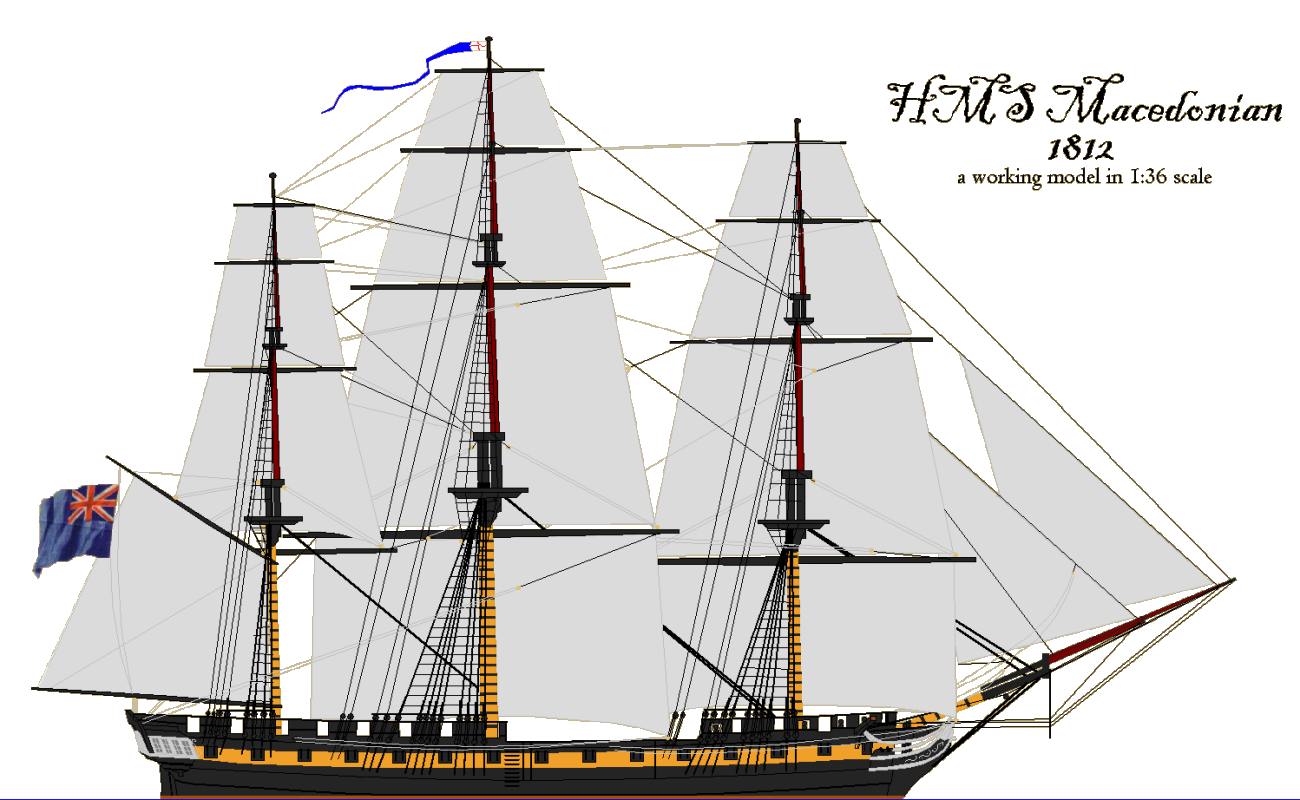Height bottom of keel to main truck, without ballast keel: 60.8" (154.4cm), with ballast keel: 64.3" (163.3cm)

Macedonian profile by Chapelle
The model will be built plank-on-bulkhead - that is, selected stations will be cut from plywood
as forms. The hull will be planked in soft pine and faired. Most of the forms will be removed, a few will be left to support
internal decks for the mechanics to operate the model under sail.
The plans for the model are those drawn by Howard Chapelle as plan 14 in The History of the American
Sailing Navy and ordered from the Smithsonian Institution in 1:48 scale.
There's some research yet to do. What the ships transom and galleries looked like, for instance. Chapelle's given spar dimensions are from 1818 and probably represent her
Americanized rig. Finding the spar dimensions for the Lively class is one of my chores, or failing that, determining her rig from British practice at the time,
and comparing them to the 1818 rig.
This site will house information on my build of this model. A build log will also be kept
at the Model Ship World forums
where discussion and progress will be posted.

Draught of Lively class frigate Bacchante, dated August 1809 in the National Maritime Museum
Worklog Table of Contents:
1 - 10/2011-11/20/2011: Design; Specification; Framing (this page)
2 - 11/23-12/19/11: Planking
3 - 12/20-1/10-2012: Planking; Removing Forms; Inside Resin; Installing Frames;
4 - 3/7-7/9/12: Fiberglass; Starboard Top & Butt Planked Wale; Transom Appearance
5 - 9/29/12-8/2/16: Port wale. Gunports. 3D printed guns. Shelved. Model Boat Expo. Controls.
6 - 9/29/12-11/1/16: Drawing Spars full size. Launch-cart. Channels. Quarter Galleries. Masts.
7 - 3/29/20-11/15/23: 3D Printing. Stove.
8 - 2/8/24-: 3D Modeling the Stern. Guns. Capstan.
9 - 11/15/25: 3d Modeling: Capstan, Gunport Lids, Cat-heads, Dead-eyes
October, 2011: When researching a ship, you often cannot find every detail you'd like on the ship itself, but you can often deduce information
based on other ships of the same class, built around the same time, and the standards in place when your ship was built.
Frigates of the Napoleonic Wars by Robert Gardiner is an excellent source of information - not so much on Macedonian
directly, but on the Lively class and standard practice in the Royal Navy in Macedonian's time. Gardiner, for instance, includes
standard spar dimensions for frigates. Comparing these to the 1818 dimensions yields a rig that's lower, wider, and a little heavier sparred.
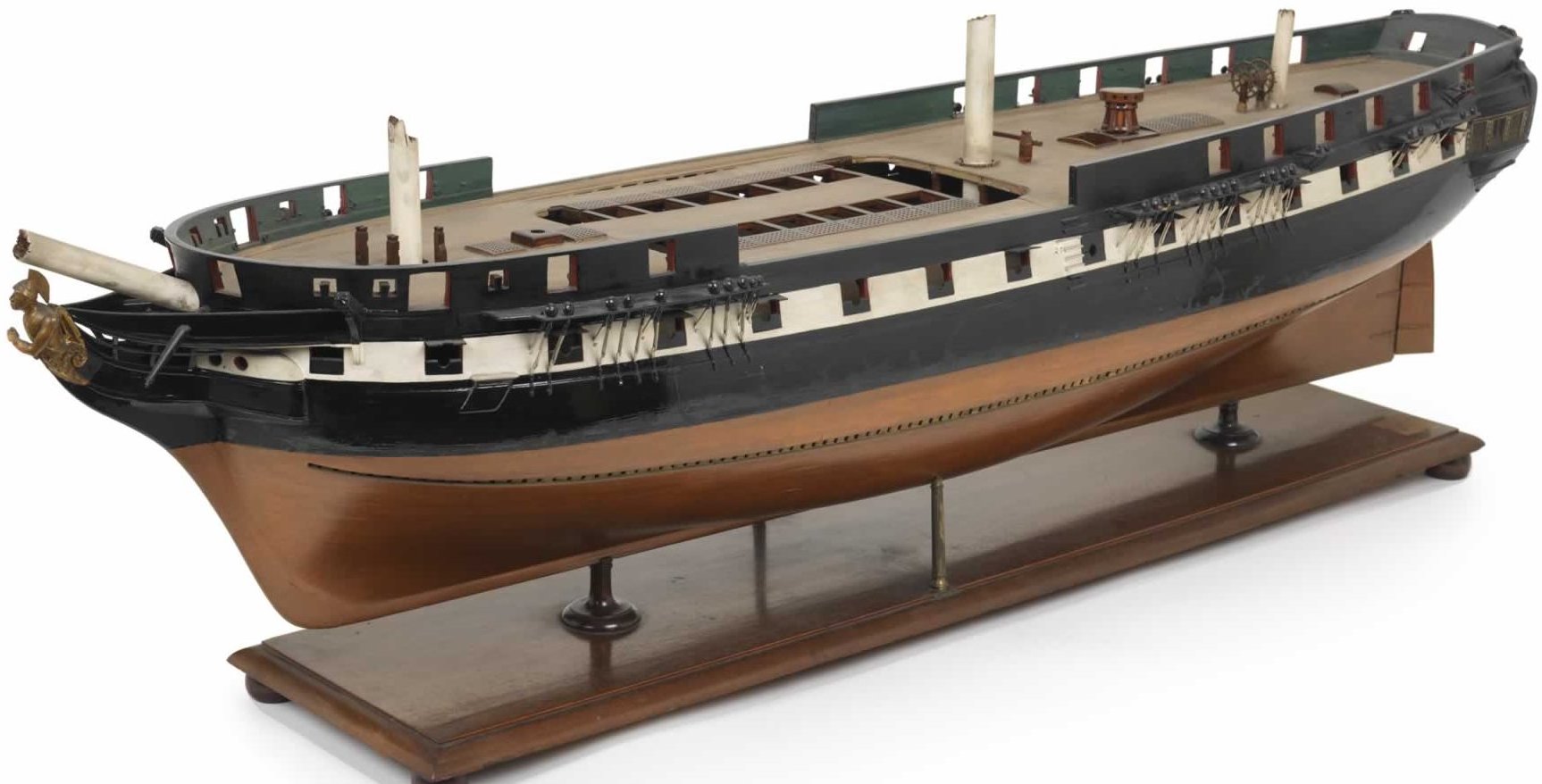 The main hatch will be similar to that on the Lacedaemonian model, but with squared corners instead of round. I'm still trying to come up with a transom. The Lively
drawing shows 8 windows, but draughts that show the sterns of most 38's I can find have 7 windows - still digging.
The main hatch will be similar to that on the Lacedaemonian model, but with squared corners instead of round. I'm still trying to come up with a transom. The Lively
drawing shows 8 windows, but draughts that show the sterns of most 38's I can find have 7 windows - still digging.
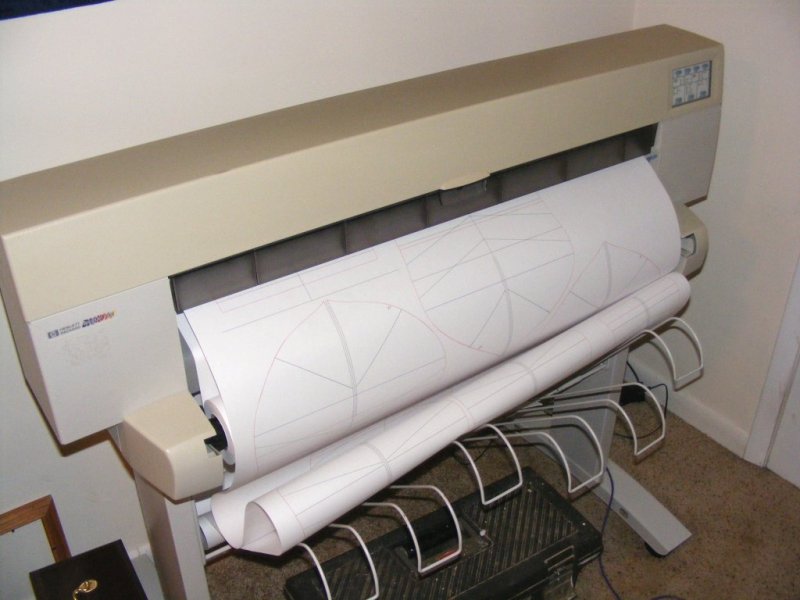 These paper patterns will be used to cut the plywood forms to shape and help note such things as the wale, decks, waterline, etc.
These paper patterns will be used to cut the plywood forms to shape and help note such things as the wale, decks, waterline, etc.
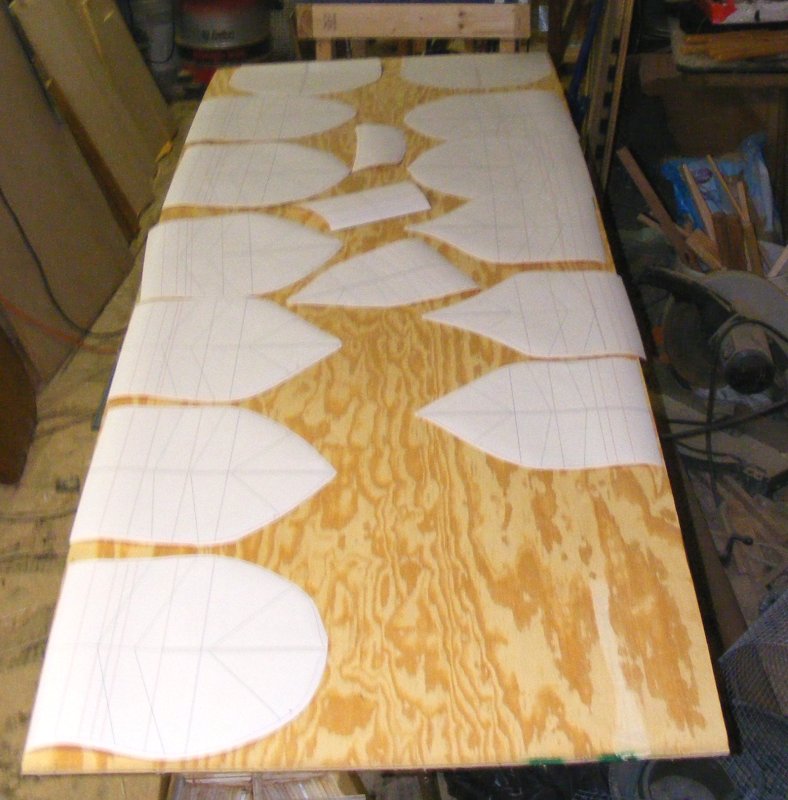 The paper patterns are cut out, laid out on the wood and their general outline traced. They're rough cut with a jigsaw. The paper pattern is glued on using glue-stick,
the form is more finely cut on the band saw, and touched up on the belt sander. The forms are also beveled to the shape of the hull.
The paper patterns are cut out, laid out on the wood and their general outline traced. They're rough cut with a jigsaw. The paper pattern is glued on using glue-stick,
the form is more finely cut on the band saw, and touched up on the belt sander. The forms are also beveled to the shape of the hull.
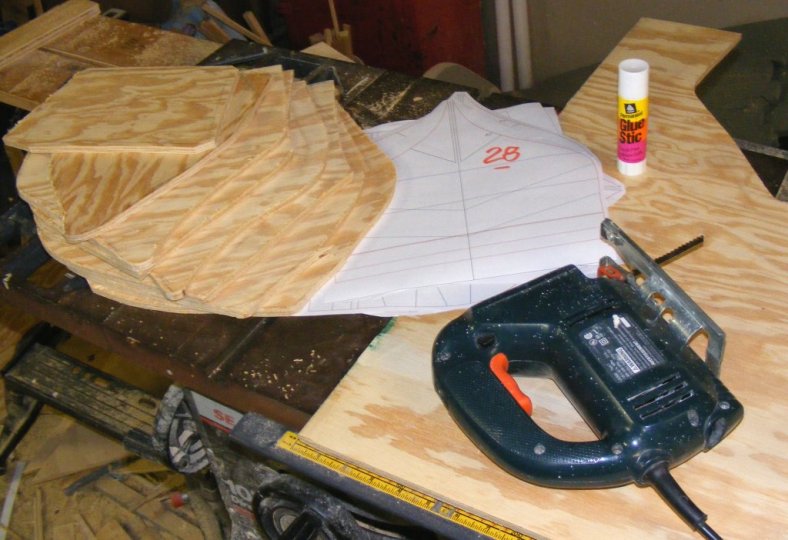
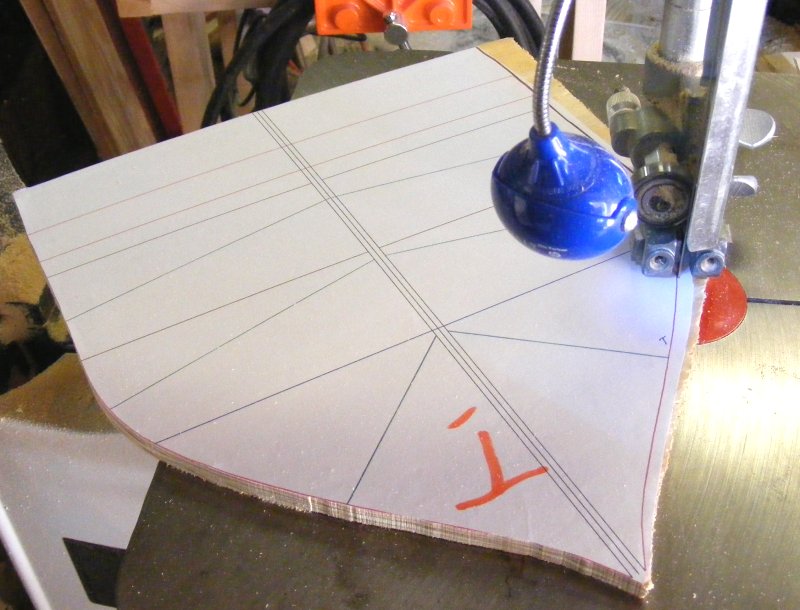
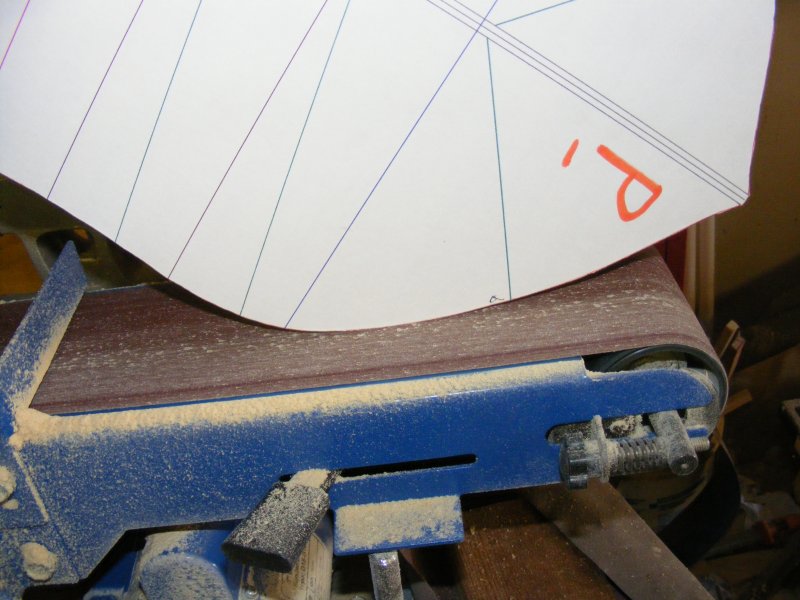
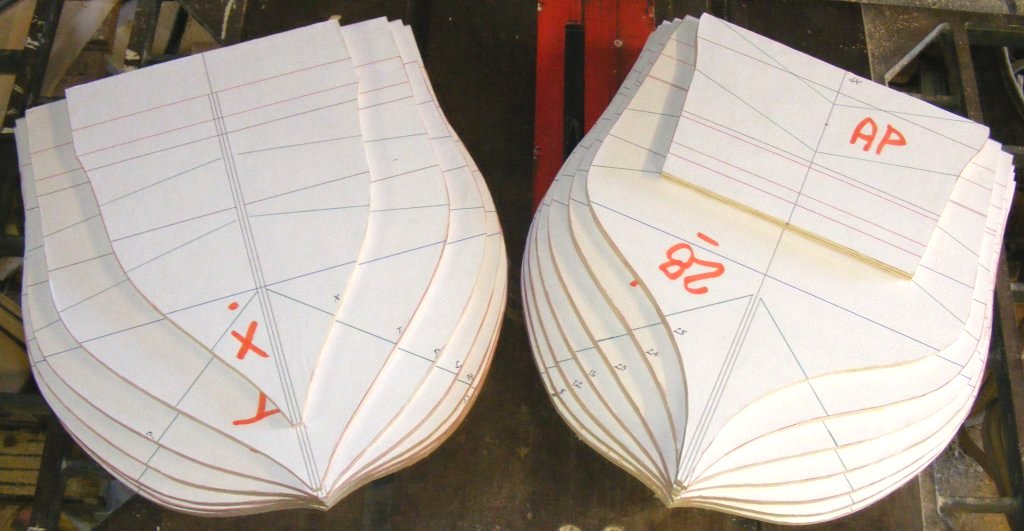
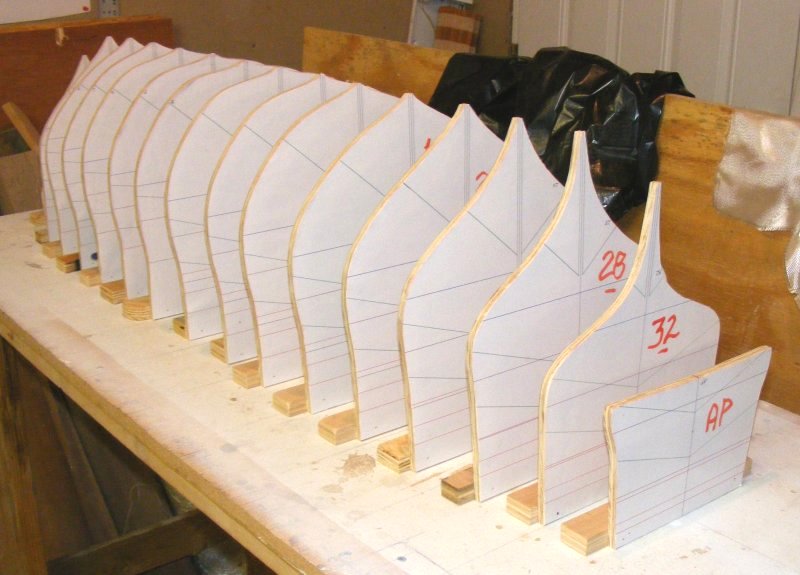
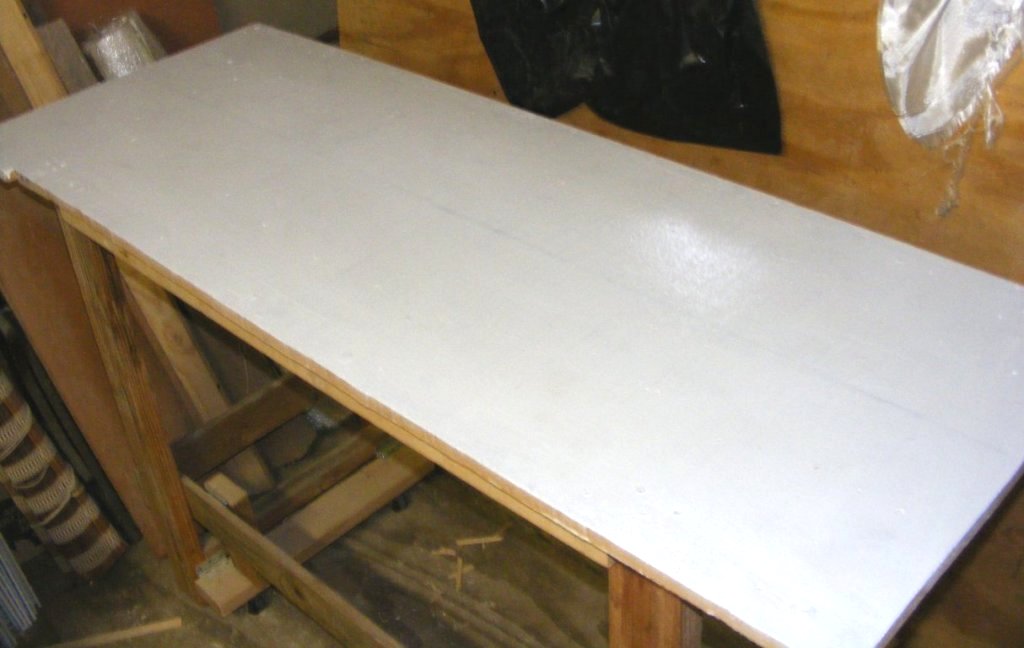 11/13: After building the Constellation and Pride hulls on it, the bench was getting pretty scruffy and it was hard to see the correct marks on it, so I sanded it and gave
it some paint in prep for setting up Macedonian
11/13: After building the Constellation and Pride hulls on it, the bench was getting pretty scruffy and it was hard to see the correct marks on it, so I sanded it and gave
it some paint in prep for setting up Macedonian
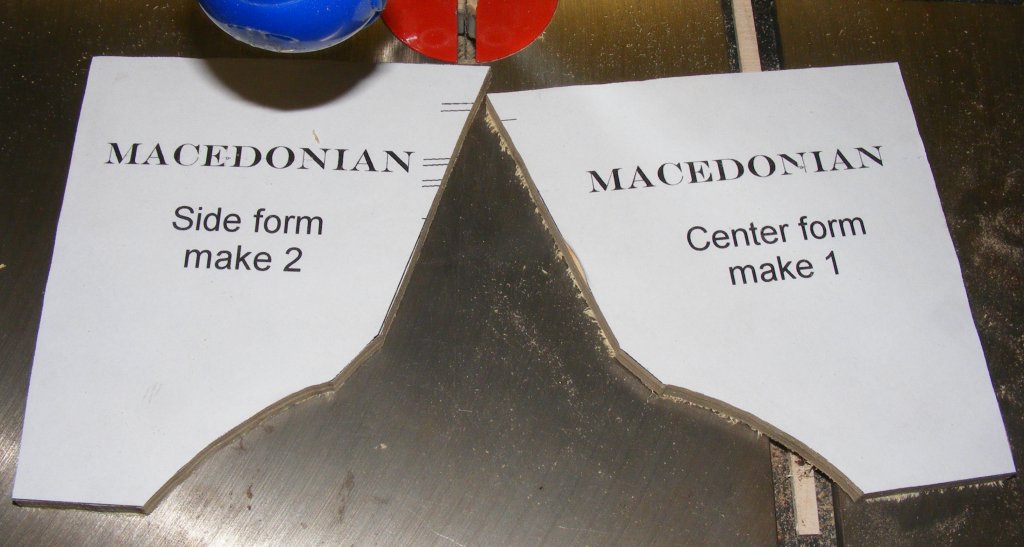 11/19: I tried to figure out the transom from the drawing and decided to make forms for the lines I was the most sure of; the two sides and the center.
That looks like it'll get me what I want
11/19: I tried to figure out the transom from the drawing and decided to make forms for the lines I was the most sure of; the two sides and the center.
That looks like it'll get me what I want
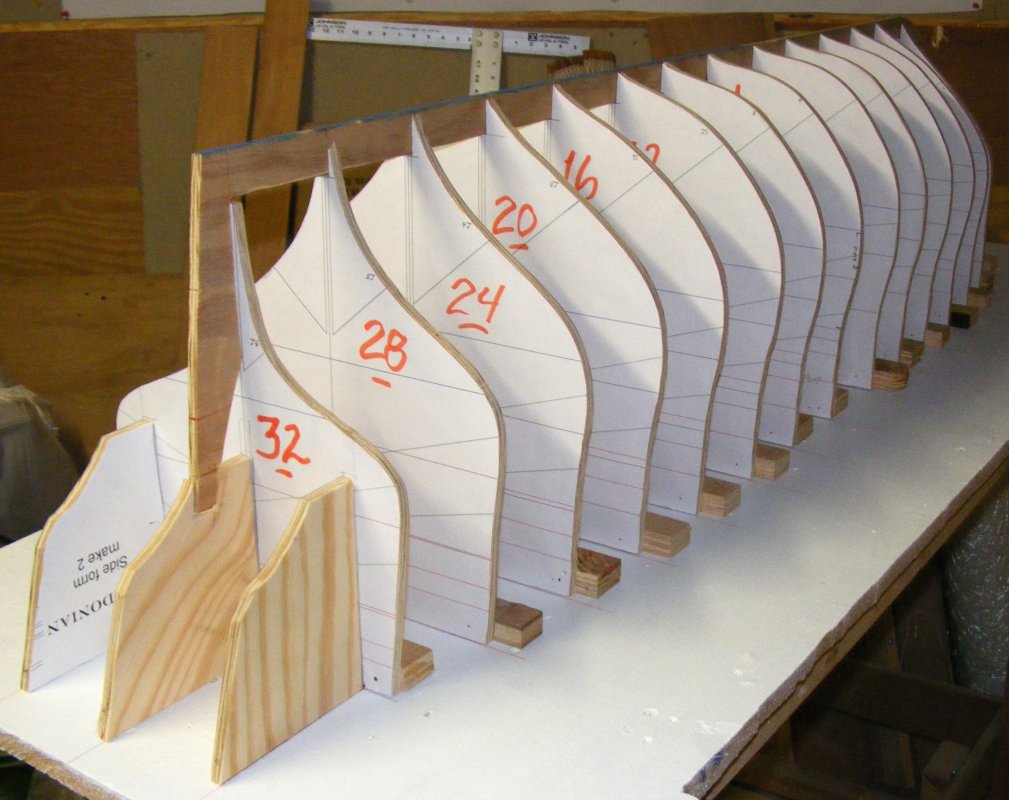 The inner keel was cut from 1/4" plywood and all the forms notched to receive it. Like the Pride model, the planking will be glued to the keel,
but not the forms, which will be removed when the planking is completed. The center form for the transom had to be notched for the sternpost.
The inner keel was cut from 1/4" plywood and all the forms notched to receive it. Like the Pride model, the planking will be glued to the keel,
but not the forms, which will be removed when the planking is completed. The center form for the transom had to be notched for the sternpost.
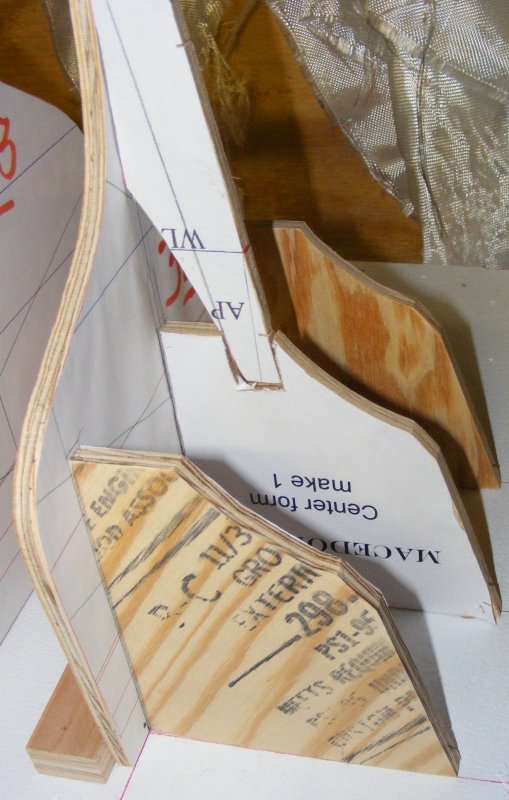
11/20: A trip to the big home supply store that somehow never has everything you need, somehow had everything I went for. A 1" x 8" x 6' pine board, some glue, and a new thinner saw blade.
I ripped some planks off the board and decided to rip those in half giving me 3/8ish x 3/32" planks - rather than ripping it into thirds like I did for the Pride's hull.
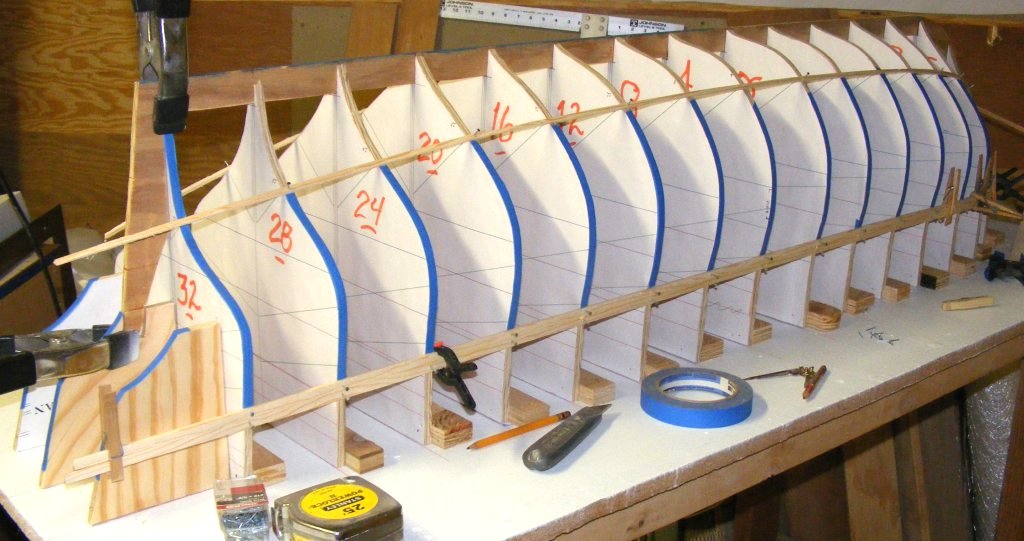 I put battens on at the lower diagonals to steady the forms. The forms got taped so the planking wouldn't stick to them, and the port side sheer plank was tacked on,
then the next plank below it was glued to it, or above it as the hull's being built upside down.
I put battens on at the lower diagonals to steady the forms. The forms got taped so the planking wouldn't stick to them, and the port side sheer plank was tacked on,
then the next plank below it was glued to it, or above it as the hull's being built upside down.
Next Page | Latest Entry | Top














